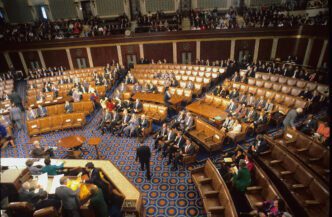Executive Summary
The Story So Far
Why This Matters
Who Thinks What?
Off-year elections in Virginia and New Jersey in 2025 delivered what an analysis by Aaron Blake describes as a direct rebuke to President Donald Trump, despite his claims of limited involvement in the races. The results, published and updated on November 8, 2025, suggest a robust anti-Trump sentiment among voters, appearing stronger than in previous elections where Trump was not on the ballot.
Trump Downplays Involvement
Following the elections, President Trump downplayed his role, stating he “was not much involved” in what he characterized as a “pretty grim 2025 election for Republicans.” Speaking from the Oval Office alongside Hungarian Prime Minister Viktor Orban, Trump noted he did not support the gubernatorial candidate in Virginia nor extensively the candidate in New Jersey.
He also commented on the New York City mayoral candidate, Andrew Cuomo, by questioning, “do you want a thug or do you want a communist?” Trump concluded his remarks by reiterating, “So I wasn’t involved in that stuff too much.”
Analysis Indicates Direct Rebuke
However, analysis suggests that regardless of Trump’s asserted distance, the elections were centrally about him and reflected a significant voter rejection. This outcome indicates that the anti-Trump vote remains as strong and motivated as ever, while the pro-Trump vote appears to be at a comparative low.
National Polling Context
A CNN poll released ahead of the elections supported this sentiment, showing a substantial gap in voter motivation. Forty-one percent of registered voters stated their congressional vote would be aimed at opposing Trump, compared to just 21 percent who intended their vote to show support for him.
This 20-point disparity represents the largest such gap in CNN polling in nearly two decades, surpassing the 2006 election where 36 percent opposed George W. Bush versus 15 percent who supported him. The gap was also more pronounced than in Trump’s first midterm elections in 2018, when 38 percent of voters were anti-Trump and 25 percent were pro-Trump.
State-Level Election Data
Exit poll data from Virginia and New Jersey further underscored this trend. In Virginia, the gap between anti-Trump and pro-Trump votes widened to 22 points (38 percent to 16 percent) in 2025, up from 17 points in 2017. New Jersey saw an even greater increase, with the gap growing from 17 points in 2017 to 28 points (41 percent to 13 percent) in the recent elections.
These state-level differences were notably larger than the national gaps observed in the 2018 and 2022 midterms, both of which stood at 12 points. Despite efforts by Trump and his allies to portray New Jersey as a potential swing state, the exit polls showed three times as many anti-Trump voters as pro-Trump voters.
Implications for the Anti-Trump Movement
The consistent strength of the anti-Trump vote suggests that the movement, exemplified by events like the “No Kings” rallies, remains highly engaged and robust. Even if adherents are not entirely satisfied with the Democratic Party, their motivation to vote against Trump appears undiminished.
Enthusiasm of Trump’s Base
Conversely, the data indicates a potential lack of enthusiasm within Trump’s base. The CNN poll showed only one in five registered voters intending their vote to support Trump, with exit polls in New Jersey and Virginia showing even lower figures. This suggests that despite Trump’s significant influence within the Republican Party, his base may not be as energized as previously, potentially signaling an electoral challenge for Trump and the GOP.








